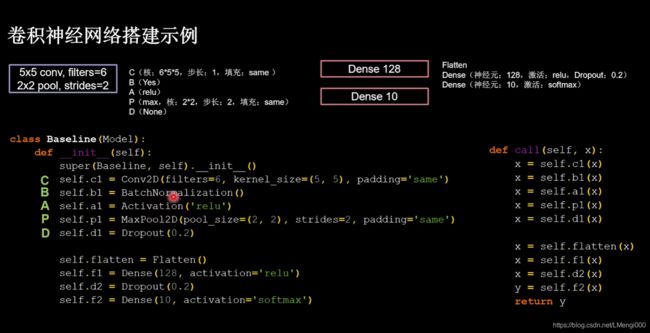- MFC数字图像处理24位图转8位图 等四种图像色彩转换方式
CurtainSystem
数字图像处理数字图像处理图像色彩转换24位图转8位图
一、实验主要思路和基本操作本实验主要探究8位图和24位图的颜色转换。8位图具有调色板,调色板中有对应的256种不同的颜色,每种颜色所含的RGB值都不一样。24位图没有调色板,RGB三个颜色分量分别都有0-255可选择,属于真彩色图像。其中,两种不同位数的图形都有彩色图像和灰度图像两种,灰度图像中每个像素的颜色分量,R、G、值都一样。所以本实验核心分为两点:了解颜色的RGB组合和学会调色板的使用调色
- 数字图像处理与Python语言实现-Box模糊CUDA实现
视觉与物联智能
数字图像处理与Python实现python深度学习计算机视觉图像处理CUDA
Box模糊CUDA实现文章目录Box模糊CUDA实现1、Box模糊的基本原理2、算法优化:滑动窗口技术3、参数对模糊效果的影响4、Box模糊的优缺点5、与高斯模糊的对比6、实际应用场景7、算法实现7.1PyCUDA实现7.2CuPy实现7.3C++与CUDA实现8、总结在图像处理领域,**Box模糊(方框模糊或均值模糊)**是一种基础且高效的模糊算法,其核心思想是通过对像素邻域内的颜色值取平均值来
- 数字图像处理(三:图像如果当作矩阵,那加减乘除处理了矩阵,那图像咋变):从LED冬奥会、奥运会及春晚等等大屏,到手机小屏,快来挖一挖里面都有什么
数字图像处理(三)一、(准备工作:咋玩,用什么玩具)图像以矩阵形式存储,那矩阵一变、图像立刻跟着变?1.Python+JupyterNotebook/Lab+库(NumPy,OpenCV,Matplotlib,scikit-image)2.MATLAB+ImageProcessingToolbox3.JavaScript+HTML5Canvas+浏览器4.专业的图像处理软件(带脚本/插件功能)二、
- 【python实用小脚本-135】Python 实现图像卡通化:轻松将照片转换为卡通风格
Kyln.Wu
Pythonpythonopencv开发语言
引言在数字图像处理领域,将普通照片转换为卡通风格的效果一直备受关注。无论是为了制作个性化的头像、设计创意海报,还是单纯为了娱乐,卡通化效果都能为图像增添趣味性和艺术感。然而,手动使用图像编辑软件(如Photoshop)进行卡通化处理,不仅操作复杂,而且需要一定的设计技巧。假设你是一位社交媒体爱好者,想要将自己的照片转换成卡通风格,用作头像或分享。手动处理不仅耗时,而且效果可能不尽如人意。这种情况下
- 数字图像处理学习笔记
andwhataboutit?
学习笔记
1-图像处理基础_哔哩哔哩_bilibili输出图像像素点需要将图象值要作类型转换,转成Int图像仿射变换线性变换+平移线性变换:1,变换前直线,变换后仍然直线2,直线比例不变3,直线到远点的距离不变仿射变换计算:常见变换:恒等变换:变换前后一致尺度变换:对尺寸作放大或缩小旋转变换:图像旋转但是尺寸不变平移::位置移动尺寸不变偏移(垂直、水平):垂直或者水平方向变化代码示例:importcv2im
- 数字图像处理第二次实验
愚戏师
数字图像处理python图像处理
实验三技术点分析根据实验要求,需要实现以下图像空间域滤波技术:噪声生成:高斯噪声椒盐噪声空间域滤波:均值滤波(3×3,5×5,7×7)中值滤波(3×3,5×5,7×7)最大值滤波最小值滤波图像处理流程:读取原始图像添加噪声(高斯/椒盐)应用各种滤波器可视化对比结果完整示例代码importcv2importnumpyasnpimportmatplotlib.pyplotaspltfrommatplo
- python 中值滤波
search7
python
中值滤波是数字信号处理和数字图像处理领域使用较多的预处理技术,使用邻域内所有信号的中位数替换中心像素的值,可以在滤除异常值的情况下较好地保留纹理信息。该技术会在一定程度上造成图像模糊和失真,滤波窗口变大时会非常明显。importnumpyasnpfromPILimportImageimportscipy.signalassignalim=Image.open('lena.jpg')data=[]w
- Python机器学习实战——逻辑回归(附完整代码和结果)
小白熊XBX
机器学习机器学习python逻辑回归
Python机器学习实战——逻辑回归(附完整代码和结果)关于作者作者:小白熊作者简介:精通c#、Halcon、Python、Matlab,擅长机器视觉、机器学习、深度学习、数字图像处理、工业检测识别定位、用户界面设计、目标检测、图像分类、姿态识别、人脸识别、语义分割、路径规划、智能优化算法、大数据分析、各类算法融合创新等等。联系邮箱:
[email protected]科研辅导、知识付费答疑、个性化定制
- colour-demosaicing:实现多款CFA去马赛克算法的Python开源包
常琚蕙
colour-demosaicing:实现多款CFA去马赛克算法的Python开源包colour-demosaicingCFA(ColourFilterArray)DemosaicingAlgorithmsforPython项目地址:https://gitcode.com/gh_mirrors/co/colour-demosaicing项目介绍在数字图像处理领域,马赛克效应(Mosaicing)是
- OpenCV图像添加水印
一、前言在数字图像处理中,为图片添加水印是一项常见且重要的技术。无论是版权保护、品牌宣传还是防止未经授权的使用,水印都能发挥重要作用。OpenCV作为一款强大的计算机视觉库,提供了丰富的功能来实现各种水印效果。本教程将详细介绍如何使用OpenCV为图像添加文字水印和图片水印。二、环境准备在开始之前,请确保已安装以下环境:Python3.xOpenCV库(可通过pipinstallopencv-py
- OpenCV图像噪点消除五大滤波方法
慕婉0307
opencv基础opencv人工智能计算机视觉
在数字图像处理中,噪点消除是提高图像质量的关键步骤。本文将基于OpenCV库,详细讲解五种经典的图像去噪滤波方法:均值滤波、方框滤波、高斯滤波、中值滤波和双边滤波,并通过丰富的代码示例展示它们的实际应用效果。一、图像噪点与滤波基础1.1常见图像噪声类型高斯噪声:符合正态分布的随机噪声椒盐噪声:随机出现的黑白像素点泊松噪声:光子计数噪声量化噪声:模拟信号数字化过程中产生1.2滤波方法分类滤波类型特点
- 基于FPGA的数字图像处理【1.5】
BinaryStarXin
FPGA图像处理fpga开发FPGA与图像处理FPGA技术优势硬件工程dsp开发射频工程驱动开发
第2章FPGA与图像处理随着图像分辨率的大幅度提升和图像处理算法复杂度的提升,传统的串行处理器已经越来越不能满足图像处理的实时性需求。多核结构处理、GPU处理及FPGA很快在实时性图像处理领域得到了迅速的发展。本章将重点介绍基于FPGA的实时性图像处理。FPGA通过为每个功能建立单独的硬件来实现整个应用程序所需要的逻辑功能,这使其很适合图像处理,尤其是采用流水线来处理视频流,可以在同一个时刻进行多
- Python编程:图像增强
倔强老吕
C++与python交互编程pythonopencv计算机视觉图像增强
图像增强图像增强是数字图像处理中的重要技术,旨在改善图像质量或突出图像中的有用信息,为后续的分析和处理提供更好的基础。空间域图像增强灰度变换定义灰度变换是一种点处理(pointprocessing)操作,可表示为:s=T(r)其中:r:输入图像像素的原始灰度值(通常范围[0,L-1],如8位图像为[0,255])s:变换后的输出灰度值T:灰度变换函数核心特性单像素操作:输出值仅取决于对应位置的输入
- OpenCV C++ 边缘检测与图像分割
achene_ql
opencvc++计算机视觉人工智能
一、边缘检测在数字图像处理领域,边缘检测是一项至关重要的基础技术。它如同为图像赋予“骨架”,帮助计算机快速识别图像中的物体轮廓、形状与结构,广泛应用于目标识别、图像分割、图像配准等多个领域。1.1概念边缘检测的核心目标是找出图像中像素灰度发生剧烈变化的区域边界。这些边界往往对应着图像中物体的轮廓、不同物体的交界处或纹理变化明显的地方。通过提取这些边缘信息,可以有效减少图像数据量,同时保留图像中最关
- Visual C++数字图像处理算法与实战教程
咸鱼豆腐
本文还有配套的精品资源,点击获取简介:本教程面向初学者,涵盖数字图像处理核心概念和技术,包括灰度转换、图像滤波和旋转等基本操作。通过VisualStudio(VS)环境和实例实践,学习者将掌握如何利用C++进行图像处理编程。本教程还介绍了VisualStudio集成开发环境(IDE)的使用,以及如何利用OpenCV等第三方库进行图像处理开发。1.VisualStudio集成开发环境(IDE)介绍*
- OpenCV C++ 图像处理教程:灰度变换与直方图分析
achene_ql
opencvc++图像处理计算机视觉人工智能
在数字图像处理领域,灰度变换与直方图分析是最基础且核心的技术,它们如同“图像的化妆师”,能够通过调整像素灰度分布显著改善图像视觉效果,为后续的目标检测、图像分割等高级任务奠定基础。无论是校正图像的亮度与对比度,还是从低质量图像中提取有效信息,掌握这些技术都是图像处理从业者的必备技能。一、点运算(PointOperation)1.概念点运算是图像处理中最基础的操作之一,指对图像中每个像素点的灰度值进
- MATLAB实现的基于SVD的数字图像水印技术
张锦云
本文还有配套的精品资源,点击获取简介:在数字图像处理中,SVD水印技术是一种有效的版权保护方法。它利用SVD算法在MATLAB环境下嵌入和提取水印,确保图像质量的同时隐藏信息。本文介绍了在MATLAB中实现SVD水印的步骤,包括图像预处理、SVD分解、水印嵌入、图像重构、水印提取和代码注释等关键环节。实践中涉及的技术点包括图像处理、SVD函数使用、数据编码策略、数值稳定性和图像质量评估。1.数字图
- 学习Opencv——图像金字塔
JustRemind
CVCVOpenCV
以多个分辨率来表示图像的一种有效且概念简单的结构是图像金字塔,一个图像金字塔是一系列以金子塔形状排列的、分辨率逐渐降低的图像集合。——《数字图像处理》。1.基本概念图像金字塔由Adelson于1984年提出[1],图像金字塔是一个图像集合,集合中所有的图像都源于同一个原始图像,而且是通过对原始图像连续降采样获得,直到达到某个中止条件才停止采样。常用两类图像金字塔:1)高斯金字塔(Gaussianp
- 列车轨道及其障碍物检测相关算法
他人是一面镜子,保持谦虚的态度
车道检测研究列车轨道检测
目录一、开源算法来源1.1列车轨道+障碍物检测(AI算法)1.2列车轨道(滤波算法)1.3列车轨道(滤波算法)二、运行代码2.3.1具体流程2.3.2详细代码2.3.3运行步骤一、开源算法来源1.1列车轨道+障碍物检测(AI算法)GitHub-ELKYang/RailWay_Detection:电车轨道与障碍物检测(SJTU数字图像处理课程设计)1.2列车轨道(滤波算法)火车轨道铁路轨道检测识别(
- 七天速成数字图像处理之五(图像分割)
ZzzZ31415926
图像处理计算机视觉算法人工智能数学建模
图像分割(ImageSegmentation)是数字图像处理中最核心、最具挑战性的任务之一,其目标是将图像划分为具有一致特征的区域,从而实现对图像中目标或结构的提取、理解与分析。下面我将从概念、分类、经典方法、实际应用四个层面为你系统性地讲解图像分割。一、什么是图像分割?定义:图像分割是指将图像划分为若干个互不重叠的区域,使得每个区域内部具有某种一致性(如灰度、纹理、颜色、边缘等),而不同区域之间
- python数字图像处理基础(六)——模板匹配、直方图
_hermit:
数字图像处理python计算机视觉开发语言
目录模板匹配概念单对象模板匹配多对象模板匹配直方图1.查找直方图2.绘制直方图3.掩膜的应用模板匹配概念模板匹配和卷积原理很像,模板在原图像上从原点开始滑动,计算模板与图像被模板覆盖的地方的差别程度,这个差别程度的计算方法在opencv里有6种,然后将每次计算的结果放入一个矩阵里,作为结果输出。假如原图是AxB大小,而模板是axb大小,则输出结果的矩阵是(A-a+1)x(B-b+1)(通过.sha
- matlab基于GUI实现水果识别
kaikaile1995
matlab
基于GUI实现水果识别系统,限一个图片内存在一种水果图像处理是一种利用计算机分析图像以达到预期结果的技术。图像处理一般指数字图像处理,而数字图像指由工业相机、摄像机、扫描仪等设备捕捉到的二维数组,数组中的元素称为像素,元素的值称为灰度值。计算机图像识别技术和人识别图像在原理上没有本质区别,只是机器没有人的感觉。人类图像识别不仅仅是依赖于整个图像在脑中的映像、我们依赖于图像本身特点然后对图像进行分类
- 使用 C/C++ 和 OpenCV 添加图片水印
使用C/C++和OpenCV添加图片水印️在数字图像处理中,添加水印是一种常见的操作,可以用于版权保护、品牌宣传或信息标注。本文将介绍如何使用C/C++和强大的计算机视觉库OpenCV来实现将自定义水印(图片或文字)添加到目标图片上。准备工作️在开始之前,请确保你已经具备以下条件:C/C++编译器:如GCC/G++,Clang,MSVC等。OpenCV库:需要预先安装并配置好OpenCV。你可以从
- 图像增强利器:一站式Matlab代码解决方案
岑童嵘
图像增强利器:一站式Matlab代码解决方案增强.zip项目地址:https://gitcode.com/open-source-toolkit/206fb在数字图像处理的世界里,高质量的图像增强技术是通往视觉清晰度的关键之门。今天,我们要向您隆重推荐一个精心打造的开源宝藏——《图像增强Matlab代码合集》,这是一份专为加速研究和学习曲线而生的资源,旨在让每一位图像处理爱好者和专业人员都能轻松掌
- 《数字图像处理(面向新工科的电工电子信息基础课程系列教材)》第三次印刷
phoenix@Capricornus
DIP书稿图像处理
禹晶、肖创柏、廖庆敏《数字图像处理(面向新工科的电工电子信息基础课程系列教材)》第三次印刷修正了第二次印刷的排版误删错误。冈萨雷斯在滤波器部分是大错。指数滤波器的概念本身就是错的,直接删除(这个不是他的错)。至于巴特沃斯滤波器,就算讲模拟滤波器,错误也太多,幅频响应少个根号,频率变换也是错的,从低通到高通再到带通、带阻,截止频率处的增益哪哪哪都不一样。最重要的是,模拟滤波器如果要应用于数字信号,就
- OpenCV CUDA模块图像处理------颜色空间处理之拜耳模式去马赛克函数demosaicing()
村北头的码农
OpenCVopencv图像处理人工智能
操作系统:ubuntu22.04OpenCV版本:OpenCV4.9IDE:VisualStudioCode编程语言:C++11算法描述该函数用于在GPU上执行拜耳图像(BayerPattern)的去马赛克操作(Demosaicing),将单通道的原始传感器图像转换为三通道的彩色图像(如BGR或RGB格式),是数字图像处理中用于相机图像解码的关键步骤。相机传感器通常只能捕捉一个颜色通道(红、绿、蓝
- 机器学习套娃:从数字图像处理到深度学习,一张图秒懂四者关系
LYPHARD MELODY。
深度学习机器学习深度学习人工智能
为啥写这篇?刚入门AI的同学常被这四个概念绕晕:“数字图像处理是不是深度学习?”“神经网络和机器学习啥关系?”今天用俄罗斯套娃+炒土豆丝的类比,5分钟理清它们的「祖孙三代」关系!核心结论(套娃图镇楼)【最外层】机器学习(ML)⊃【中间层】神经网络(NN)⊃【最内层】深度学习(DL)【平行层】数字图像处理=传统方法(手工规则)+现代方法(被DL/ML包含)(类比:「做饭」⊃「用锅炒菜」⊃「用铁锅大火
- 东南大学图像处理课程PPT核心要点详解
leniou的牙膏
本文还有配套的精品资源,点击获取简介:图像处理是多领域交叉的学科,主要通过数字计算手段操作图像数据。东南大学的PPT讲义详述图像处理的基础知识与实践方法,涵盖了从图像增强到深度学习应用的各个方面。包括图像基础知识、图像增强、变换、分割、特征提取、复原与重建、编码与压缩,以及机器学习与深度学习在图像处理的应用,还可能包含实际案例分析。1.图像基础知识概览图像的数字化数字图像处理开始于图像的数字化。图
- 基于MATLAB-GUI图形界面的数字图像处理
t19875128
matlab计算机视觉人工智能
基于MATLABGUI的数字图像处理系统实现方案,包含常见图像处理功能。代码分为两部分:GUI界面设计和回调函数实现。%%第一部分:创建GUI界面(使用GUIDE)%1.打开GUIDE:guide%2.创建新GUI,添加以下控件:%-1个axes(Tag:originalAxes)%-1个axes(Tag:processedAxes)%-按钮组:%-"打开图像"(Tag:openButton)%-
- OpenCV计算机视觉实战(1)——计算机视觉简介
AI technophile
OpenCV项目实践指南计算机视觉opencv人工智能
OpenCV计算机视觉实战(1)——计算机视觉简介0.前言1.计算机图像学历史2.图像信息检索3.图像处理3.1表示3.2操作3.3灵活性3.4可重现性4.数字图像处理小结0.前言随着计算机和摄影技术的发展,计算机视觉作为一个实用领域应运而生。计算机视觉本质上赋予了计算机感知和理解世界的能力,通过图像和视频的视角来理解世界,这类似于为计算机赋予视觉和认知能力。假设,我们向计算机展示一幅可爱的萌宠图
- html页面js获取参数值
0624chenhong
html
1.js获取参数值js
function GetQueryString(name)
{
var reg = new RegExp("(^|&)"+ name +"=([^&]*)(&|$)");
var r = windo
- MongoDB 在多线程高并发下的问题
BigCat2013
mongodbDB高并发重复数据
最近项目用到 MongoDB , 主要是一些读取数据及改状态位的操作. 因为是结合了最近流行的 Storm进行大数据的分析处理,并将分析结果插入Vertica数据库,所以在多线程高并发的情境下, 会发现 Vertica 数据库中有部分重复的数据. 这到底是什么原因导致的呢?笔者开始也是一筹莫 展,重复去看 MongoDB 的 API , 终于有了新发现 :
com.mongodb.DB 这个类有
- c++ 用类模版实现链表(c++语言程序设计第四版示例代码)
CrazyMizzz
数据结构C++
#include<iostream>
#include<cassert>
using namespace std;
template<class T>
class Node
{
private:
Node<T> * next;
public:
T data;
- 最近情况
麦田的设计者
感慨考试生活
在五月黄梅天的岁月里,一年两次的软考又要开始了。到目前为止,我已经考了多达三次的软考,最后的结果就是通过了初级考试(程序员)。人啊,就是不满足,考了初级就希望考中级,于是,这学期我就报考了中级,明天就要考试。感觉机会不大,期待奇迹发生吧。这个学期忙于练车,写项目,反正最后是一团糟。后天还要考试科目二。这个星期真的是很艰难的一周,希望能快点度过。
- linux系统中用pkill踢出在线登录用户
被触发
linux
由于linux服务器允许多用户登录,公司很多人知道密码,工作造成一定的障碍所以需要有时踢出指定的用户
1/#who 查出当前有那些终端登录(用 w 命令更详细)
# who
root pts/0 2010-10-28 09:36 (192
- 仿QQ聊天第二版
肆无忌惮_
qq
在第一版之上的改进内容:
第一版链接:
http://479001499.iteye.com/admin/blogs/2100893
用map存起来号码对应的聊天窗口对象,解决私聊的时候所有消息发到一个窗口的问题.
增加ViewInfo类,这个是信息预览的窗口,如果是自己的信息,则可以进行编辑.
信息修改后上传至服务器再告诉所有用户,自己的窗口
- java读取配置文件
知了ing
1,java读取.properties配置文件
InputStream in;
try {
in = test.class.getClassLoader().getResourceAsStream("config/ipnetOracle.properties");//配置文件的路径
Properties p = new Properties()
- __attribute__ 你知多少?
矮蛋蛋
C++gcc
原文地址:
http://www.cnblogs.com/astwish/p/3460618.html
GNU C 的一大特色就是__attribute__ 机制。__attribute__ 可以设置函数属性(Function Attribute )、变量属性(Variable Attribute )和类型属性(Type Attribute )。
__attribute__ 书写特征是:
- jsoup使用笔记
alleni123
java爬虫JSoup
<dependency>
<groupId>org.jsoup</groupId>
<artifactId>jsoup</artifactId>
<version>1.7.3</version>
</dependency>
2014/08/28
今天遇到这种形式,
- JAVA中的集合 Collectio 和Map的简单使用及方法
百合不是茶
listmapset
List ,set ,map的使用方法和区别
java容器类类库的用途是保存对象,并将其分为两个概念:
Collection集合:一个独立的序列,这些序列都服从一条或多条规则;List必须按顺序保存元素 ,set不能重复元素;Queue按照排队规则来确定对象产生的顺序(通常与他们被插入的
- 杀LINUX的JOB进程
bijian1013
linuxunix
今天发现数据库一个JOB一直在执行,都执行了好几个小时还在执行,所以想办法给删除掉
系统环境:
ORACLE 10G
Linux操作系统
操作步骤如下:
第一步.查询出来那个job在运行,找个对应的SID字段
select * from dba_jobs_running--找到job对应的sid
&n
- Spring AOP详解
bijian1013
javaspringAOP
最近项目中遇到了以下几点需求,仔细思考之后,觉得采用AOP来解决。一方面是为了以更加灵活的方式来解决问题,另一方面是借此机会深入学习Spring AOP相关的内容。例如,以下需求不用AOP肯定也能解决,至于是否牵强附会,仁者见仁智者见智。
1.对部分函数的调用进行日志记录,用于观察特定问题在运行过程中的函数调用
- [Gson六]Gson类型适配器(TypeAdapter)
bit1129
Adapter
TypeAdapter的使用动机
Gson在序列化和反序列化时,默认情况下,是按照POJO类的字段属性名和JSON串键进行一一映射匹配,然后把JSON串的键对应的值转换成POJO相同字段对应的值,反之亦然,在这个过程中有一个JSON串Key对应的Value和对象之间如何转换(序列化/反序列化)的问题。
以Date为例,在序列化和反序列化时,Gson默认使用java.
- 【spark八十七】给定Driver Program, 如何判断哪些代码在Driver运行,哪些代码在Worker上执行
bit1129
driver
Driver Program是用户编写的提交给Spark集群执行的application,它包含两部分
作为驱动: Driver与Master、Worker协作完成application进程的启动、DAG划分、计算任务封装、计算任务分发到各个计算节点(Worker)、计算资源的分配等。
计算逻辑本身,当计算任务在Worker执行时,执行计算逻辑完成application的计算任务
- nginx 经验总结
ronin47
nginx 总结
深感nginx的强大,只学了皮毛,把学下的记录。
获取Header 信息,一般是以$http_XX(XX是小写)
获取body,通过接口,再展开,根据K取V
获取uri,以$arg_XX
&n
- 轩辕互动-1.求三个整数中第二大的数2.整型数组的平衡点
bylijinnan
数组
import java.util.ArrayList;
import java.util.Arrays;
import java.util.List;
public class ExoWeb {
public static void main(String[] args) {
ExoWeb ew=new ExoWeb();
System.out.pri
- Netty源码学习-Java-NIO-Reactor
bylijinnan
java多线程netty
Netty里面采用了NIO-based Reactor Pattern
了解这个模式对学习Netty非常有帮助
参考以下两篇文章:
http://jeewanthad.blogspot.com/2013/02/reactor-pattern-explained-part-1.html
http://gee.cs.oswego.edu/dl/cpjslides/nio.pdf
- AOP通俗理解
cngolon
springAOP
1.我所知道的aop 初看aop,上来就是一大堆术语,而且还有个拉风的名字,面向切面编程,都说是OOP的一种有益补充等等。一下子让你不知所措,心想着:怪不得很多人都和 我说aop多难多难。当我看进去以后,我才发现:它就是一些java基础上的朴实无华的应用,包括ioc,包括许许多多这样的名词,都是万变不离其宗而 已。 2.为什么用aop&nb
- cursor variable 实例
ctrain
variable
create or replace procedure proc_test01
as
type emp_row is record(
empno emp.empno%type,
ename emp.ename%type,
job emp.job%type,
mgr emp.mgr%type,
hiberdate emp.hiredate%type,
sal emp.sal%t
- shell报bash: service: command not found解决方法
daizj
linuxshellservicejps
今天在执行一个脚本时,本来是想在脚本中启动hdfs和hive等程序,可以在执行到service hive-server start等启动服务的命令时会报错,最终解决方法记录一下:
脚本报错如下:
./olap_quick_intall.sh: line 57: service: command not found
./olap_quick_intall.sh: line 59
- 40个迹象表明你还是PHP菜鸟
dcj3sjt126com
设计模式PHP正则表达式oop
你是PHP菜鸟,如果你:1. 不会利用如phpDoc 这样的工具来恰当地注释你的代码2. 对优秀的集成开发环境如Zend Studio 或Eclipse PDT 视而不见3. 从未用过任何形式的版本控制系统,如Subclipse4. 不采用某种编码与命名标准 ,以及通用约定,不能在项目开发周期里贯彻落实5. 不使用统一开发方式6. 不转换(或)也不验证某些输入或SQL查询串(译注:参考PHP相关函
- Android逐帧动画的实现
dcj3sjt126com
android
一、代码实现:
private ImageView iv;
private AnimationDrawable ad;
@Override
protected void onCreate(Bundle savedInstanceState)
{
super.onCreate(savedInstanceState);
setContentView(R.layout
- java远程调用linux的命令或者脚本
eksliang
linuxganymed-ssh2
转载请出自出处:
http://eksliang.iteye.com/blog/2105862
Java通过SSH2协议执行远程Shell脚本(ganymed-ssh2-build210.jar)
使用步骤如下:
1.导包
官网下载:
http://www.ganymed.ethz.ch/ssh2/
ma
- adb端口被占用问题
gqdy365
adb
最近重新安装的电脑,配置了新环境,老是出现:
adb server is out of date. killing...
ADB server didn't ACK
* failed to start daemon *
百度了一下,说是端口被占用,我开个eclipse,然后打开cmd,就提示这个,很烦人。
一个比较彻底的解决办法就是修改
- ASP.NET使用FileUpload上传文件
hvt
.netC#hovertreeasp.netwebform
前台代码:
<asp:FileUpload ID="fuKeleyi" runat="server" />
<asp:Button ID="BtnUp" runat="server" onclick="BtnUp_Click" Text="上 传" />
- 代码之谜(四)- 浮点数(从惊讶到思考)
justjavac
浮点数精度代码之谜IEEE
在『代码之谜』系列的前几篇文章中,很多次出现了浮点数。 浮点数在很多编程语言中被称为简单数据类型,其实,浮点数比起那些复杂数据类型(比如字符串)来说, 一点都不简单。
单单是说明 IEEE浮点数 就可以写一本书了,我将用几篇博文来简单的说说我所理解的浮点数,算是抛砖引玉吧。 一次面试
记得多年前我招聘 Java 程序员时的一次关于浮点数、二分法、编码的面试, 多年以后,他已经称为了一名很出色的
- 数据结构随记_1
lx.asymmetric
数据结构笔记
第一章
1.数据结构包括数据的
逻辑结构、数据的物理/存储结构和数据的逻辑关系这三个方面的内容。 2.数据的存储结构可用四种基本的存储方法表示,它们分别是
顺序存储、链式存储 、索引存储 和 散列存储。 3.数据运算最常用的有五种,分别是
查找/检索、排序、插入、删除、修改。 4.算法主要有以下五个特性:
输入、输出、可行性、确定性和有穷性。 5.算法分析的
- linux的会话和进程组
网络接口
linux
会话: 一个或多个进程组。起于用户登录,终止于用户退出。此期间所有进程都属于这个会话期。会话首进程:调用setsid创建会话的进程1.规定组长进程不能调用setsid,因为调用setsid后,调用进程会成为新的进程组的组长进程.如何保证? 先调用fork,然后终止父进程,此时由于子进程的进程组ID为父进程的进程组ID,而子进程的ID是重新分配的,所以保证子进程不会是进程组长,从而子进程可以调用se
- 二维数组 元素的连续求解
1140566087
二维数组ACM
import java.util.HashMap;
public class Title {
public static void main(String[] args){
f();
}
// 二位数组的应用
//12、二维数组中,哪一行或哪一列的连续存放的0的个数最多,是几个0。注意,是“连续”。
public static void f(){
- 也谈什么时候Java比C++快
windshome
javaC++
刚打开iteye就看到这个标题“Java什么时候比C++快”,觉得很好笑。
你要比,就比同等水平的基础上的相比,笨蛋写得C代码和C++代码,去和高手写的Java代码比效率,有什么意义呢?
我是写密码算法的,深刻知道算法C和C++实现和Java实现之间的效率差,甚至也比对过C代码和汇编代码的效率差,计算机是个死的东西,再怎么优化,Java也就是和C
